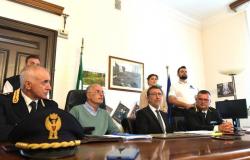Saturday and Sunday the citizens of 28 Piacenza municipalities will be called to the polls to elect the new mayor and renew the respective municipal councils at the same time.
The electoral campaign, as we know, is always full of commitments and promises.
We allow ourselves, then, to to suggest to aspiring administrators some simple ideas, on topics within the jurisdiction of the Municipalities, thanks to which they could make their territory greener and more sustainable, perhaps putting it at the forefront on issues that will be increasingly on the agenda.
ten ideas to make municipalities greener
The first particularly affects the lowland areas, where pollution due to traffic is high: thesmog-eating asphalt. Thanks to the heat deriving from the sun’s rays and the action of titanium dioxide, it is possible to create a reaction capable of transforming the polluting gases released by vehicles into salts suitable for absorption by the ground: why not include this in the next tenders for asphalting? It costs a little more than traditional asphalt, but in the cities where it has been laid the benefits have been immediate and tangible.
Staying on the subject, it is decidedly more expensive, but it can really represent a leap into the future.use of self-repairing materials for roads and pavements: it involves using self-healing substances, which contain bacteria in a “dormant” state which, when a crack forms on the surface, begin to produce a resistant calcareous filling, healing the surface. After a large initial investment, maintenance costs would be reduced, increasing the lifespan of the infrastructure.
Roads and cycle/pedestrian paths can also be used to produce energy. In two ways. In Holland, just to give the most successful example, i cycle paths made with photovoltaic panels.
While Italy is also experimenting with energy flooring: thanks to special piezoelectric sensors, the passage of cars, trucks, bicycles and pedestrians can be converted from mechanical energy into electrical energy. Even in this case, it would be a high initial investment, but with considerable savings over the years, obviously provided that the transition is numerically intense.
They have been known for some time, but not yet widespread, photovoltaic shelters of bus stops ei photovoltaic street lights: in both cases the investments can be limited because they are supported by public incentives or because they are foreseen by specific points included in the tender notices.
Green chapter. Some municipalities (obviously with Northern Europe leading the way) have started to create vertical gardens on the walls of public buildings and supported citizens who wanted to do the same with private homes. In addition to improving urban aesthetics, this allows buildings to be thermally insulated and the air purified.
Others, however, have invested in “smart trees,” which combine natural plants with technology to monitor air quality and other environmental conditions, perhaps even adding mini-wind turbines for energy production.
The municipalities of the most polluted areas, then, for maintenance work on public structures photocatalytic paintswhich act with the same principle as smog-eating asphalt.
Tenth and final green advice to future mayors: increase the systems rainwater collection, to be used for the irrigation of public gardens. The cost is low, the benefit enormous in terms of water saving.





